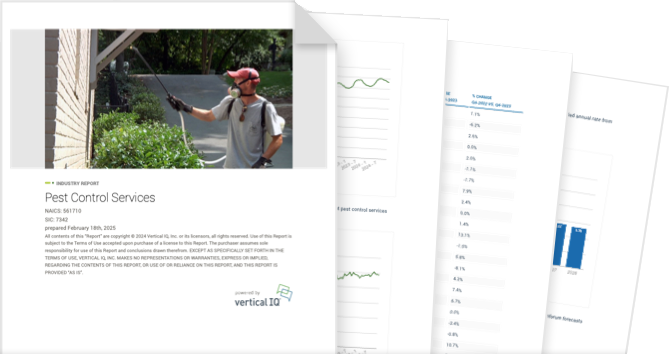Local Governments NAICS 921110, 921130

Unlock access to the full platform with more than 900 industry reports and local economic insights.
Get access to this Industry Profile including 18+ chapters and more than 50 pages of industry research.
Industry Summary
The 90,000 local government entities in the US include counties, municipalities, towns and townships, as well as special purpose entities, such as special districts and independent school districts. Local governments generate revenue from taxes, intergovernmental funding, and fees for services provided. They use this revenue to fund the delivery of services for education, health, police protection, highways, public welfare, sewerage, solid waste disposal, parks and recreation, utilities, housing, and government administration.
Dependence On Property Taxes
Taxes are the largest revenue source for local governments and property taxes account for about 72% of tax revenues.
Spending Mandates
Local governments are often required to spend money to comply with federal and state mandates, even when those mandates are unfunded.
Recent Developments
May 5, 2025 - Local Governments Join Lawsuit Against Trump Administration
- A coalition of labor unions, nonprofits, and local governments have filed a lawsuit against the Trump administration claiming that actions taken by the president, Elon Musk, and the heads of nearly two dozen federal agencies to dramatically downsize the federal workforce violate the Constitution because Congress has not authorized them. "Three months into this Administration, there can be no real doubt that impacted federal agencies are acting according to the direction being given by President Trump through DOGE, OMB, and OPM," the lawsuit states, referring to the government efficiency team that Musk oversees, as well as the Office of Management and Budget (OMB) and the Office of Personnel Management (OPM). The plaintiffs further note that "since the founding of the nation, federal courts have recognized that the federal agencies are not created by the President," but by Congress, which has the sole authority to undertake the kind of wholesale transformation Trump has ordered.
- Localities and states are launching efforts to connect fired federal workers with jobs and other assistance, according to Governing.com. "Even people who don’t work directly for the federal government or its contractors are bracing for the downstream effects of federal cuts," said Howard County, MD, County Executive Calvin Ball. The cuts that the federal Department of Government Efficiency has imposed so far, often targeting probationary employees who are in the early months of a new position, have stripped some people of their livelihoods and others of their colleagues and sense of security, Ball says. Other workers say that they’ve been suddenly promoted because their supervisors were fired.
- Property taxes remain by far the most important source of local revenue in the US, generating about 72% of local tax collections, according to The Tax Foundation, but state and local policymakers regularly search for other revenue sources that could potentially reduce the property tax burden. Local income taxes are authorized in 16 states and the District of Columbia. They account for more than 20% of local tax collections in Kentucky, Maryland, and Ohio. Local sales taxes are imposed by 36 states and the District of Columbia. They constitute more than 40% of local tax collections in Alabama, Arkansas, Louisiana, and New Mexico. Localities in only seven states, mostly in New England, do not impose either local income taxes or local sales taxes.
- Local government employment has rebounded from pandemic-era lows and remained above pre-pandemic levels in early 2025, according to the US Bureau of Labor Statistics. Local government revenue is forecast to grow at a 3.68% compounded annual rate from 2025 to 2029, slower than the growth of the overall economy, according to Inforum and the Interindustry Economic Research Fund, Inc. The primary revenue sources for local governments are taxes, federal and state funding, and fees charged for services.
Industry Revenue
Local Governments

Industry Structure
Industry size & Structure
The average local government entity employs about 160 workers and generates $26-27 million in annual revenue.
- There are about 90,000 local government entities in the US with over 14.5 million employees and $2.4 trillion in annual revenue.
- Local government includes counties, municipalities, towns and townships, as well as special purpose entities, such as special revenue districts and independent school districts.
- General purpose entities include 3,031 county governments, 19,495 municipal governments, and 16,253 town and township governments.
- There are 38,542 special districts in the US, such as fire protection districts, public housing authorities, and irrigation management entities.
- There are 12,754 independent school districts. These do not include school districts run by state, county, municipal, or town governments.
- The largest city governments in the US, based on population, are New York, Los Angeles, Chicago, San Jose and Washington, DC.
- The largest county governments, based on population, are: Los Angeles County, CA: Cook County, IL; Harris County, TX; Maricopa County, AZ; and San Diego County, CA.
Industry Forecast
Industry Forecast
Local Governments Industry Growth

Vertical IQ Industry Report
For anyone actively digging deeper into a specific industry.
50+ pages of timely industry insights
18+ chapters
PDF delivered to your inbox
